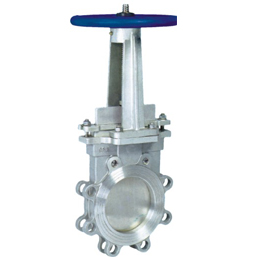Understanding the Functionality of Pressure Reducing Valves in Fluid Systems
Understanding Pressure Reducing Valves
A pressure reducing valve (PRV) is a critical component in various industrial, commercial, and residential applications to ensure safe and efficient operation of fluid systems. The fundamental purpose of a PRV is to maintain a predetermined outlet pressure, regardless of variations in input pressure. This capability is crucial for preventing damage to downstream equipment and ensuring optimal performance.
How Pressure Reducing Valves Work
The operation of a pressure reducing valve is based on the principle of difference in pressure. PRVs are typically equipped with a diaphragm that responds to the pressure in the system. As the inlet pressure fluctuates due to changes in the supply source or demand within the system, the diaphragm moves to adjust the valve opening, thus regulating the flow of fluid.
When fluid enters the valve, the pressure from the inlet side pushes against the diaphragm. If the downstream pressure exceeds the preset value, the diaphragm moves in such a way that it restricts the flow, thereby lowering the outlet pressure. Conversely, if the downstream pressure drops below the set point, the valve opens wider to allow more fluid to pass through. This self-regulating mechanism ensures that the desired pressure is maintained efficiently.
Applications of Pressure Reducing Valves
Pressure reducing valves are found in various industries and applications. Here are some key areas where they are essential
1. Water Supply Systems In municipal water supply networks, PRVs help manage pressure to prevent pipe bursts or leaks in the piping system. By regulating the pressure delivered to households and businesses, these valves ensure safe water distribution.
2. Heating and Cooling Systems In HVAC (Heating, Ventilation, and Air Conditioning) systems, maintaining consistent pressure is vital for system efficiency. PRVs help to stabilize pressure in hot water heating systems and cooling towers, contributing to energy efficiency and comfort.
1 1 4 pressure reducing valve

3. Industrial Processes Many manufacturing processes require precise control of fluid pressure. PRVs are employed to protect sensitive equipment from high-pressure surges that could lead to mechanical failure or safety hazards.
4. Gas Systems In gas distribution networks, pressure reducing valves ensure that gas is delivered at appropriate pressures for residential and commercial users, helping to maintain safety standards and equipment functionality.
Benefits of Using Pressure Reducing Valves
1. Protection of Equipment By controlling pressure levels, PRVs protect downstream equipment from excessive pressures that could cause wear, tear, or catastrophic failure.
2. Energy Savings Efficiently managing fluid pressures can lead to significant energy savings. When systems operate within the optimal pressure range, energy consumption is minimized, resulting in lower operational costs.
3. Increased System Longevity Reducing pressure fluctuations extends the lifespan of pipes, pumps, and other components in the system, thereby reducing maintenance costs and improving reliability.
4. Enhanced Safety By preventing over-pressurization, PRVs play a crucial role in ensuring safety in various applications, from residential plumbing to industrial operations.
Conclusion
Pressure reducing valves are an indispensable part of fluid management systems across numerous fields. Their ability to maintain consistent outlet pressure not only enhances the efficiency and safety of operations but also protects vital equipment from the risks associated with pressure fluctuations. As technology advances, pressure reducing valves continue to evolve, incorporating features such as remote monitoring and automated controls, making them even more effective in modern fluid systems. Investing in high-quality PRVs is essential for any operation that relies on the efficient management of fluid pressure, ensuring optimal performance and safety in the long run. As industries strive for greater efficiency and sustainability, the role of pressure reducing valves will undoubtedly remain significant, standing as a testament to the importance of precision in hydraulic and pneumatic systems.
-
The Key to Fluid Control: Exploring the Advantages of Ball Valves in Industrial SystemsNewsJul.09,2025
-
The Versatile World of 1, 2, and 3 Piece Ball ValvesNewsJul.09,2025
-
Stainless Steel Ball Valves: The Ideal Choice for Efficient Flow ControlNewsJul.09,2025
-
Optimizing Fluid Control with Ball Float ValvesNewsJul.09,2025
-
Manual Gate Valves: Essential for Control and EfficiencyNewsJul.09,2025
-
Everything You Need to Know About Butterfly ValvesNewsJul.09,2025
-
The Versatility of Wafer Type Butterfly ValvesNewsJul.08,2025




